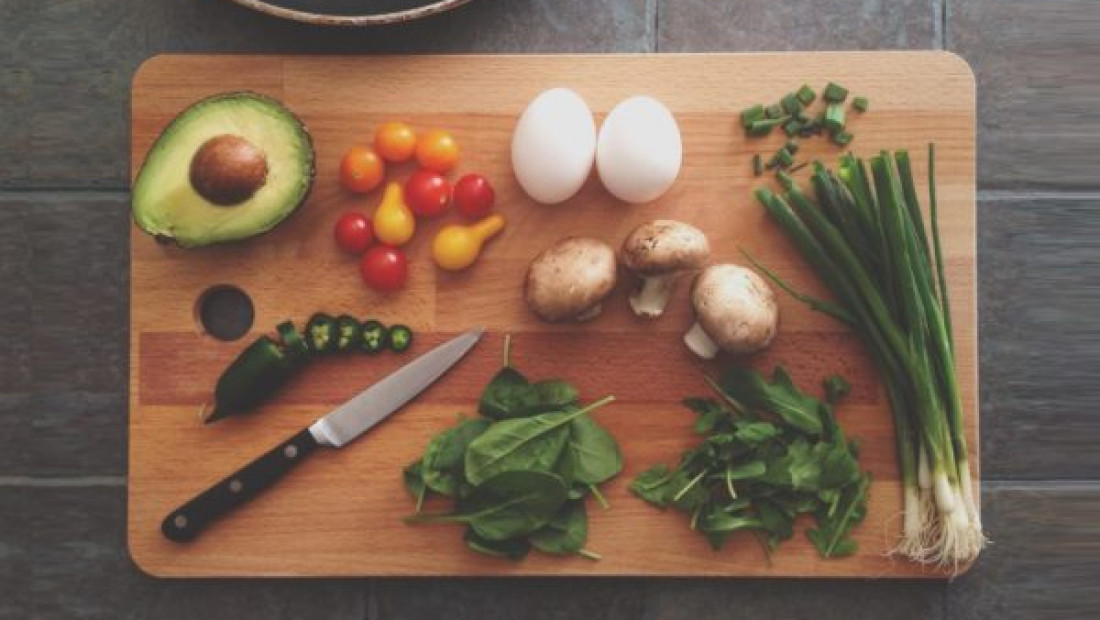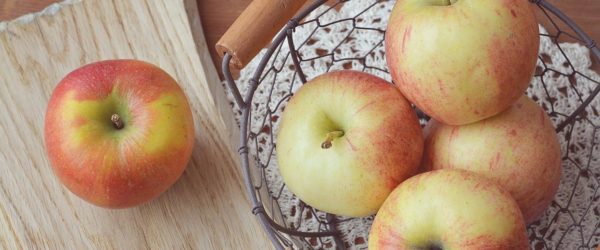
Chow Line allows individuals to ask questions to (and receive answers from) OSU Extension Family and Consumer Sciences experts.
Q: I do most of the cooking in my house. I try to prepare meals that are both good tasting and healthy. However, I am in a rut for healthy food ideas. What suggestions do you have for clever, tasty ways to add more fruits and veggies to my family’s diet?
A: The U.S. Dietary Guidelines recommends people make half their plate fruits and vegetables. That includes eating whole fruits – fresh, frozen, dried or canned in 100 percent juice and eating fresh, frozen or canned vegetables either raw, steamed, sautéed or roasted. Make sure to include dark green, red and orange vegetables as well as legumes such as beans and peas and other vegetables.
Why is this important?
People should eat more fruits and vegetables because they are major contributors of several nutrients under-consumed in the United States — vitamins A, C and K, potassium, fiber and magnesium, according to the Produce for Better Health Foundation. Fruits and vegetables are also associated with reduced risk of many chronic diseases such as obesity, heart disease, high blood pressure and Type 2 diabetes.
But, only one out of 10 Americans meets the recommended daily allowance of fruits and vegetables, according to a 2015 study by the Centers for Disease Control and Prevention. Less than 9 percent of Americans eat two to three cups of vegetables daily while 13 percent were reported to eat one and a half to two cups of fruit daily, the study found.
One way to increase your fruit and vegetable intake is to get creative in how you prepare them. The Academy of Nutrition and Dietetics offers the following suggestions:
1. Pizza, pizza, pizza

Use vegetables like broccoli, spinach, green peppers, tomatoes, mushrooms and zucchini as pizza toppings.
2. Start your day out right with a fruit smoothie

Make a breakfast smoothie with low-fat milk, frozen strawberries and a banana.
3. Make a wrap with roasted veggies

Make a veggie wrap with roasted vegetables of your choice and low-fat cheese rolled in a whole-wheat tortilla.
4. Break out the grill

Spring is right around the corner so break out the grill to prepare colorful vegetable kabobs packed with tomatoes, green and red peppers, mushrooms, and onions. Or, make kabobs with pineapple, peaches and banana. Grill on low heat until the fruit is hot and slightly golden.
5. Add the colors of the rainbow to your salad

Add color to salads with baby carrots, grape tomatoes, spinach leaves, apples or mandarin oranges.
6. Snack time!

Keep cut vegetables handy for midafternoon snacks, side dishes, lunch box additions or a quick nibble while waiting for dinner. Include red, green or yellow peppers, broccoli or cauliflower florets, carrots, celery sticks, cucumbers, snap peas or whole radishes.
7. Keep whole fresh fruit within reach

A bowl of whole fresh fruit in the center of your kitchen or dining table is a great way to encourage healthful eating.
8. Get saucy with fruit

Puree apples, berries, peaches or pears in a blender for a thick, sweet sauce on grilled or broiled seafood or poultry, or on pancakes, French toast or waffles.
9. Pack your omelet with nutrients

Turn any omelet into a hearty meal with broccoli, squash, carrots, peppers, tomatoes or onions with low-fat sharp cheddar cheese.
10. Take your sandwiches to the next level

Add pizzazz to sandwiches with sliced pineapple, apple, peppers, cucumber and tomato as fillings.
11. Give your daily breakfast a boost

Make a habit of adding fruit to your morning oatmeal, ready-to-eat cereal, yogurt or toaster waffle.
12. Turn your side dish into a meal

Top a baked potato with beans and salsa or broccoli and low-fat cheese for a filling and nutritious meal.
13. Make basic meals more complex

Add grated, shredded or chopped vegetables such as zucchini, spinach and carrots to lasagna, meat loaf, mashed potatoes, pasta sauce and rice dishes.
14. Make fruit your dessert

Slice a banana lengthwise and top with a scoop of low-fat frozen yogurt. Sprinkle with a tablespoon of chopped nuts. Or choose your favorite fruit by itself for a healthy treat.
15. Have frozen vegetables ready to add to any meal

Stock your freezer with frozen vegetables to steam or stir-fry for a quick side dish.
While making healthier food choices is always a good idea, March is National Nutrition Month and now is a good time to think about making healthy food choices an everyday event. One way to do that is to remember to “put your best fork forward” — which is the theme of National Nutrition Month this year. Even small changes in your eating habits and food choices can help you make strides in improving your health overall.
Chow Line is a service of the College of Education and Human Ecology, the College of Food, Agricultural, and Environmental Sciences and their outreach and research arms, Ohio State University Extension and the Ohio Agricultural Research and Development Center. Send questions to Chow Line, c/o Tracy Turner, 364 W. Lane Ave., Suite B120, Columbus, OH 43201, or turner.490@osu.edu.
This column was reviewed by Carolyn Gunther, assistant professor of human nutrition at the College of Education and Human Ecology.



